-
Car Reviews
- All reviews
- Midsize SUVs
- Small cars
- Utes
- Small SUVs
- Large SUVs
- Large cars
- Sports SUVs
- Sports cars
- Vans
Latest reviews
- Car News
-
Car Comparisons
Latest comparisons
- Chasing Deals
Honda’s petrol small SUV is a compelling blend of style and specification, but the HR-V Vi X comes up short on performance and outright practicality
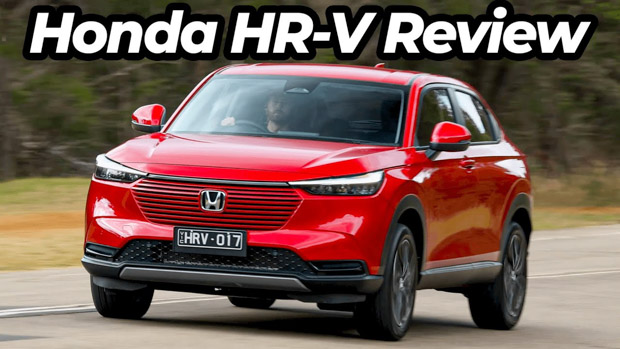
Honda has made the choice simple for buyers who like the cut of the HR-V small SUV’s jib. You opt for the E-HEV L variant for a self-charging petrol-electric hybrid. Or you choose the Vi X, the sole petrol offering. If you’re on budget, the choice between them is virtually made for you…
At $36,700 driveaway, the price of the Honda HR-V Vi X used to, just months back, undercut the hybrid’s $45,000 D/A by a sizable $8300. Then its importer upped the e-HEV L’s sticker to $47k, creating a differential of over ten grand.
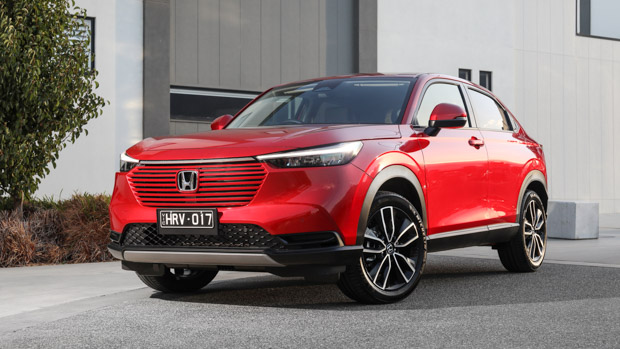
It’s a clear low- and high-grade HR-V hierarchy, with no sign of the range broadening, though there’s plenty about the Vi X that bucks low-grade status.
For a start, HR-V’s entry price point overshoots that of broader line-ups offered in key rivals such as Mazda CX-30, Mitsubishi ASX and Hyundai Kona. All of which offer buck-banging cheapies with pricing starting with a two.
In effect, the sole petrol HR-V is less entry-grade and more a solid midfielder, as most – though not all – of its spec and equipment swag strongly suggests.
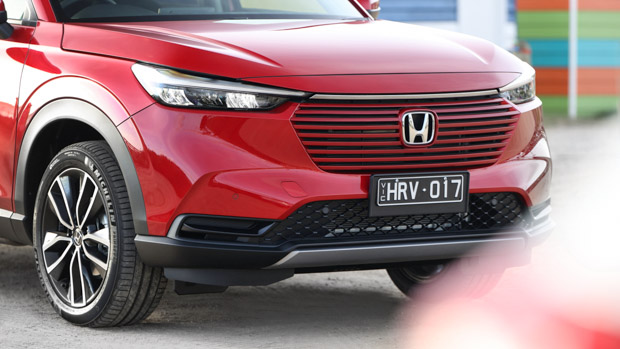
For a start, the Vi X’s look isn’t basic. In fact, from its two-toned 18-inch wheels to fulsome LED lighting, the level of upmarket presentation is on par with the pricier flagship hybrid version.
Nor does it skimp on niceties such as front and rear sensors and an adaptive reversing camera, or safety inclusions such as the nine-feature Honda Sensing suite that includes adaptive cruise control.
Inside and out, you quickly discover that the Vi X’s cost consciousness is deftly trimmed in largely inconspicuous areas to yield maximum overall effect.
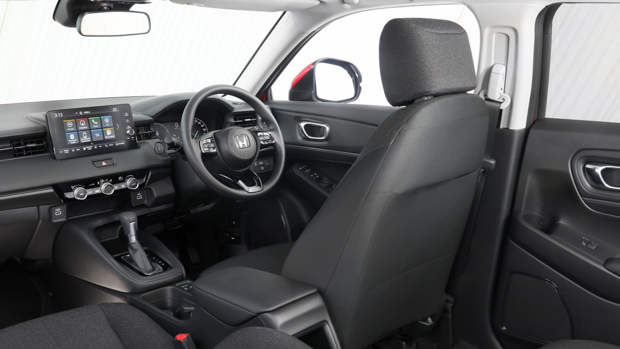
You lose details such piano black inserts and wiper rain sensing, yet win with, say, fulsome sat-nav/DAB+/wireless Apple CarPlay-loaded big-screen (9.0-inch) multimedia identical to that in the E-HEV L bar, specifically, a pair of front tweeter speakers.
In pitching itself as both healthily appointed and sporty, for not unreasonable outlay, suggests something somewhere surely presents some compromise. One that fronts up quite quickly in the driving experience.
It would be supremely disappointing if a crossover with such visual spunk lacked engagement on road. And the rising cream is the HR-V’s willing chassis.
There’s a crisp and light manner to the HR-V, with taut body control and a pleasingly clean edge to how it points and steers. At a cruise or tipping it into a corner, there’s an alertness befitting its racy form.
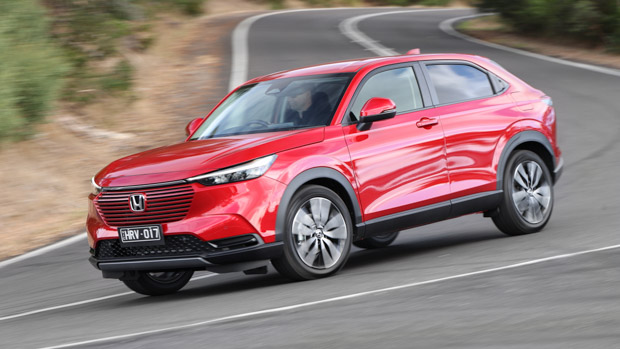
It’s no new-gen Civic – a deep well of accessible dynamic fun factor – but the HR-V’s handling shines brighter than its narrow 225mm rubber on its raised strut and torsion beam suspension should.
And with an enthusiasm to react to driving inputs rarely demonstrated elsewhere in its segment for the sort of coin the Honda demands.
Part of it is light weight. Our subject tipped the Chasing Cars digital scales at just 1255kg – full tank, no occupants – which is amazingly lithe given the body size and generous accommodation.
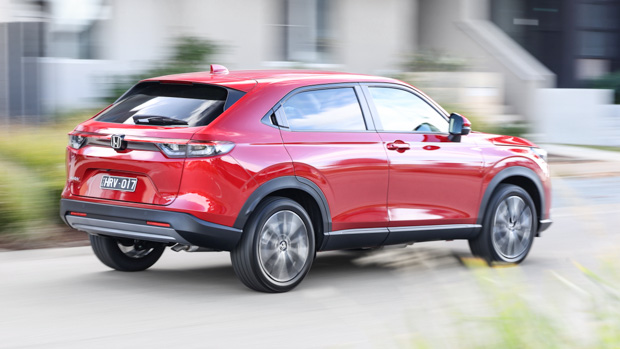
And the sheer lack of inertia does wonders for the HR-V’s dynamic response. By comparison, a Mazda CX-30 weighs 1338kg.
Some of it might be AHAS, or Agile Handling Assist System, which lightly brakes the inside front wheel when cornering as an active dynamic aid. If it works, it does so subtly and transparently.
The other part of it is suspension tuning. Yes, it’s taut by default, but a lack of excessive body flab allows just enough compliance to be dialled in.
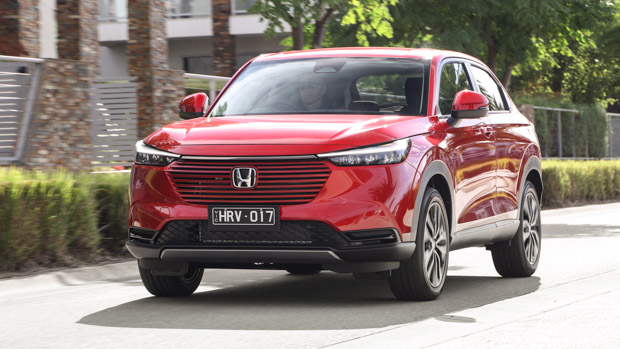
That said, ride and handling balance tips much more towards the latter, and during low-speed urban commuting the HR-V can get fizzy and thumpy at times.
Not nearly pulling its weight, though, is the petrol powertrain. Its 89kW of power is paltry by any measure, but the stinger is really the lack of torque – 145Nm – and that you need to spin the 1.5-litre naturally aspirated four to 4300rpm in order to pluck it.
Coercing any degree of effort from the underbaked engine yields a little more than a strained sonic ruckus as the CVT transmission pins the tacho needle north.
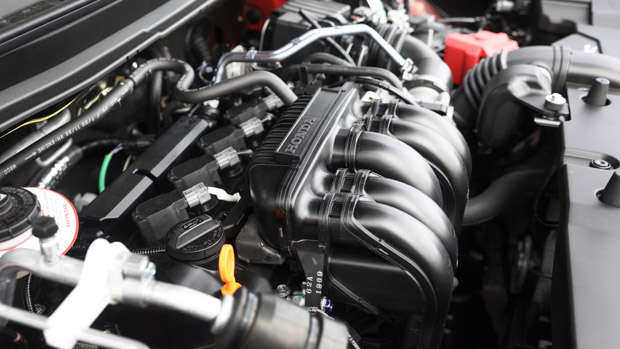
Performance, as independently tested, is a lowly and yawning 11.06 seconds for the 0-100km/h measure. Oh dear.
Sure, the far pricier hybrid plies just seven kilowatts more. But it’s the vastly surlier 253Nm, all electric and instantly accessible from zero rpm onwards, that’s measurably more effective, effortless and ultimately desirable.
But the lose-lose of the petrol HR-V format, against its hybrid kin, compounds in fuel consumption. So while its 5.8L/100km claim is handy, the mid-sevens it demonstrated across a few hundred kilometres of mixed condition driving isn’t great for the sheer lack of motivation offered.
Our test of its E-HEV L twin months back revealed more enticing 4.8L consumption that, by nature of its tendency to remain electric only under 50km/h, simply gets better around town – a scant 2.9L/100km claim – in HR-Vs natural habitat.
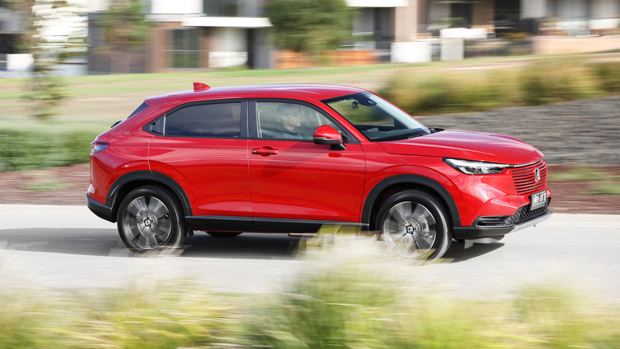
The Vi X’s leisurely canter to 100km/h is countered by a stunning 36.4-metre emergency brake back to a standstill. One of the swiftest we’ve independently tested for an SUV.
Indeed, safety is a strong suit, with active lane keeping and high beam support bundled into the aforementioned Honda Sensing suite, plus a plump array of assistance including hill descent control and tyre deflation warning.
The key omissions for the most-affordable HR-V are the hybrid’s fitted blind-spot monitoring and intelligent speed limiter.
There’s currently no ANCAP safety rating for HR-V. The lack of middle and knee airbags, and reversing AEB, means that if the Honda was to carry over Euro NCAP ratings it would score a four out of five at best.
One word comes immediately to mind when climbing into HR-V’s first row: Mazda.
Much like the SUV’s exterior design, Honda has taken the design mould from the last generation and smashed it to bits. No bad thing, as gen-two HR-V’s stodgy cabin was well past freshness when it was put to pasture.
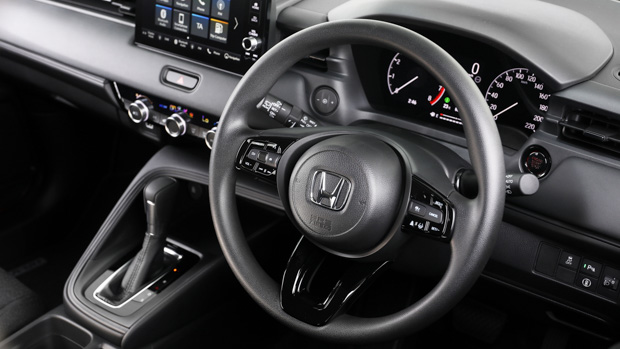
From the design elements of the semi-digital display and shape of the wheel, to squarer and more minimalist theme to the neat rotary-style controls, HR-V fresher look and vastly different vibe draws conspicuous influence from its domestic rival. If not quite to the excess of facsimile.
This is a good thing. If anything, in solidarity, it solidifies a sort of refreshed and smart Japanese design language patently lacking in the nation’s motoring of recent eras.
Despite the trendy faux air vent trim stretching the dash fascia width, its neat presentation ought to weather time better than the ‘old Honda’ stuff. It’s intuitive to navigate, nice on the eye, and a pleasingly uncomplicated cabin space to spend time in.
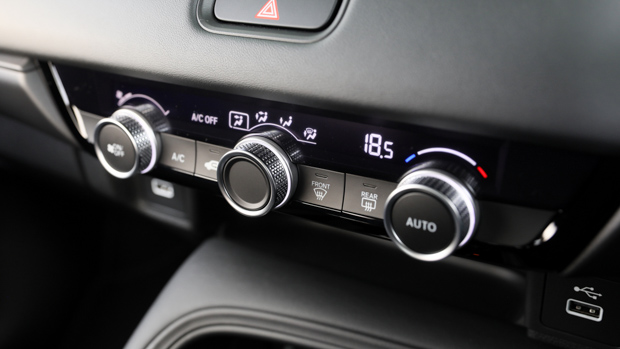
Pride of place is the 9.0-inch multimedia system, vastly improved as a new generation if still short of properly cutting-edged.
But despite some lethargy in app response, it’s loaded with the sort of content goodies some rivals merely mirror from your phone.
Unfortunately, the wireless Apple CarPlay isn’t paired with inductive charging – you’ll need a cable anyway – but map and system updates, including the workmanlike Alps Alpine navigation, are available over the air and four-speaker sound is actually quite good.
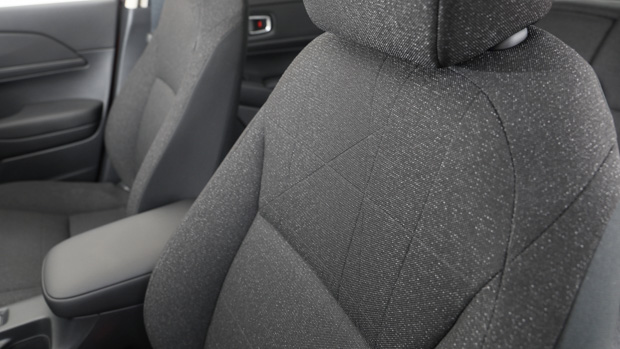
Honda could’ve downgraded the petrol’s infotainment in size and content and gotten away scott clean, but kudos that it hasn’t and didn’t.
Material quality ranges from nice, such as the textured cloth of the seat trim, to workmanlike, in most areas of shiny and hard plastic surfacing, though in general look and tactility the HR-V avoids coming across and overly cheap and cost-cut.
One obvious exception, though, is the slippery vinyl steering wheel.
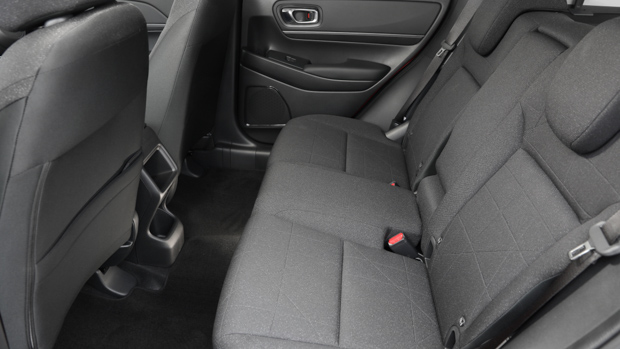
Presentation drops a grade or three in row two, as if those responsible lost interest after exiting the first row. The door cards are more basic and there’s a distinct absence of rear passenger niceties such as air vents (for its single-zone aircon) or device power.
But HR-V’s single biggest quirk is its four-seat format. Why? Apparently, it’s a requirement to meet Australian Design Rules surrounding the fitment of top tether child seat mounts, of which is absent in the centre position.
So (presumably) the centre seatbelt was omitted for compliance reasons. Strange…
That a four-seat theme vaguely mirrors the HR-V’s vaguely coupe-esque form matters little. Fact is, comfort notwithstanding, you can transport one fewer passengers in the small Honda than you can in its rivals. Not ideal.
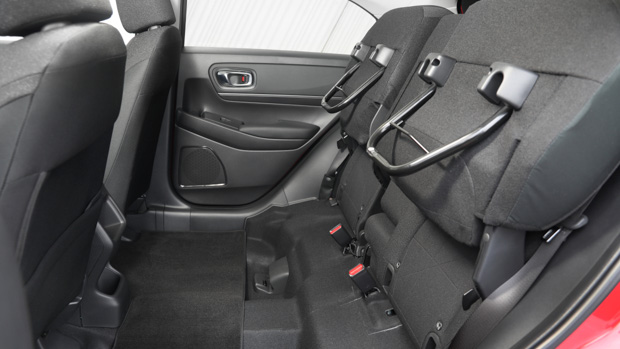
A shame, because otherwise it’s smartly packaged and impressively room (for four).
The new HR-V does make for a very handy cargo transporter. Its so-called rear Magic Seats, with a claimed 18 different configurations, means you can load all manner of bulky objects in row two.
The rear split-fold seats also stow completely flat for an instant surrogate panel van, converting a modest 304-litre boot space to a very usable 1274 litres to the roof.
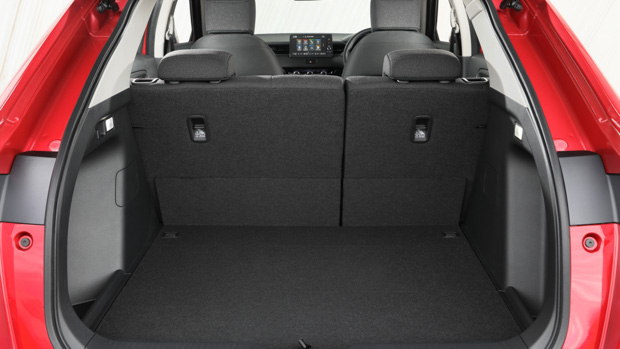
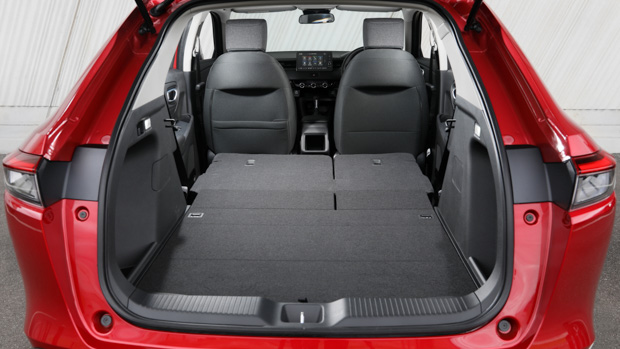
Hugely impressive is Honda’s capped price servicing costs at just $125 per visit. The only caveat here is that servicing intervals are trimmed to 10,000km terms rather than the usual 15,000kms – or every 12 months, whichever comes first.
The HR-V is more affordable to service than even , which sets back buyers back $1100 over the same five years. That said, Toyota’s 15,000km service intervals are more convenient for owners who do higher mileage.
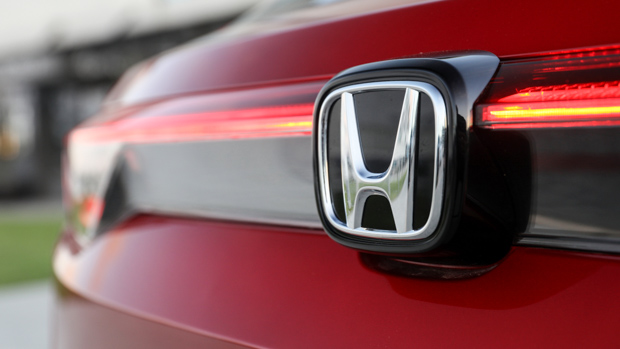
Warranty is a typical five years of unlimited-kilometre coverage. Five years of map updates are complimentary.
As outlined, as-tested consumption of 7.5L/100km came nowhere near Honda’s 5.8L claim. And it’s a lot thirstier than the 4.8L figure Chasing Cars recorded for the hybrid version in review.Honda introduces non-negotiable driveaway prices in Australia
The entry petrol version of the Honda HR-V has a lot going for it, delivering large for style and distinctiveness while offering enough quality equipment in the right places to avoid being considered basic motoring.
It certainly doesn’t look and largely doesn’t feel much of a downgrade for the hybrid asking a five-figure premium.
Better still, it has a willing chassis to back up its sporty bent.
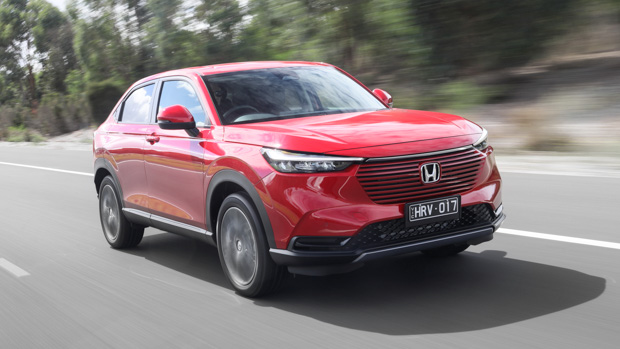
On balance, it comes up short in two key areas, though neither are perhaps difficult to amend – and indeed could be rectified in future updates.
As cute as the four-seat format seems, the HR-V really is one pew lacking. It seems as if only minor modifications might fix this issue.
But the petrol HR-V really needs a fitter powertrain. The rest of the vehicle deserves it. And the asking price warrants it.
Variant tested Vi X
Key specs (as tested)
About Chasing cars
Chasing Cars reviews are 100% independent.
Because we are powered by Budget Direct Insurance, we don’t receive advertising or sales revenue from car manufacturers.
We’re truly independent – giving you Australia’s best car reviews.
The estimate provided does not take into account your personal circumstances but is intended to give a general indication of the cost of insurance, in order to obtain a complete quote, please visit www.budgetdirect.com.au. Estimate includes 15%^ online discount.
^Conditions Apply
Budget Direct Insurance arranged by Auto & General Services Pty Ltd ACN 003 617 909(AGS) AFSL 241 411, for and on behalf of the insurer, Auto & General Insurance Company Limited(ABN 42 111 586 353, AFSL 285 571).Because we don’t know your financial needs, we can’t advise you if this insurance will suit you. You should consider your needs and the Product Disclosure Statement before making a decision to buy insurance. Terms and conditions apply.
Indicative quote based on assumptions including postcode , 40 year old male with no offences, licence suspensions or claims in the last 5 years, a NCD Rating 1 and no younger drivers listed. White car, driven up to 10,000kms a year, unfinanced, with no modifications, factory options and/or non-standard accessories, private use only and garaged at night.
^Online Discounts Terms & Conditions
1. Discounts apply to the premium paid for a new Budget Direct Gold Comprehensive Car Insurance, Third Party Property Only or Third Party Property, Fire & Theft Insurance policy initiated online on or after 29 March 2017. Discounts do not apply to optional Roadside Assistance.
2. Discounts do not apply to any renewal offer of insurance.
3. Discounts only apply to the insurance portion of the premium. Discounts are applied before government charges, taxes, levies and fees, including instalment processing fees (as applicable). The full extent of discounts may therefore be impacted.
4. We reserve the right to change the offer without notice.